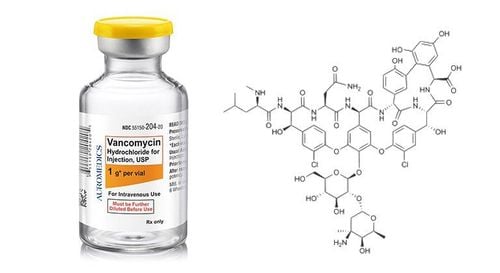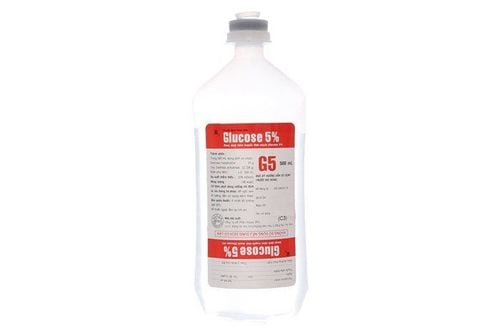This is an automatically translated article.
Gemita 1g drug has the main active ingredient is Gemcitabine in the form of Gemcitabine HCl with a content of 1g and other excipients with a sufficient amount of 1 tablet. Gemita is an anti-cancer drug that acts on the immune system, used in the treatment of locally advanced or non-small cell cancer, 5-FU resistant pancreatic cancer, adenocarcinoma of the pancreas.
1. What is Gemita?
What is Gemita drug? Gemita medicine 1g has the main active ingredient is Gemcitabine in the form of Gemcitabine HCl with a content of 1g and other excipients with a sufficient amount of 1 tablet. Gemita is an anti-cancer drug that acts on the immune system, used in the treatment of locally advanced or non-small cell cancer, 5-FU resistant pancreatic cancer, adenocarcinoma of the pancreas.
Gemita drug has a dosage form which is lyophilized powder mixed with solution for intravenous infusion.
Effects: The main active ingredient Gemcitabine is a substance used in the treatment of many types of carcinoma, inhibiting DNA synthesis and promoting the destruction of cancer cells by the mechanism of cell death. . Therefore, active ingredient Gemcitabine has the effect of preventing and slowing the growth of cancer cells, killing cancer cells.
2. What disease does Gemita treat?
Gemita drug is used in the treatment of the following diseases:
Treatment for people with locally advanced or metastatic pancreatic cancer, or 5-FU antagonists. Combination treatment with Pactiaxel for people with metastatic breast cancer. Combination therapy with carboplatin for people with advanced ovarian cancer in combination with carboplatin: Advanced ovarian cancer. Combination therapy with cisplatin for people with metastatic or advanced small cell lung cancer and locally advanced or metastatic bladder cancer.
3. Usage and dosage of Gemita
3.1. How to use Gemita The drug is used by infusion. First of all, it is necessary to change the drug from powder to solution form: add at least 5ml of 0.9% NaCl to the 1g vial, shake well to dissolve the drug for use.
3.2. Dosage of Gemita Drug Dosage for Non-Small Cell Lung Cancer
Monotherapy: For adults, the recommended dose of Gemcitabine is 1,000 mg/m2 intravenously over 30 minutes. Repeat this therapeutic dose once weekly for 3 weeks, followed by discontinuation for 1 week. The 4-week cycle should then be repeated. Reduce the therapeutic dose of the drug based on the degree of toxicity occurring in the patient.
Use in combination: For adults, Gemcitabine has been studied in combination with cisplatin according to the following 2 regimens:
3 week regimen: Use Gemcitabine 1,250 mg/m2, intravenous infusion over a period of 30 minutes on the day of use. first and eighth day of a 21-day cycle. The 3-week regimen used Cisplatin 75-100 mg/m2 on the first day of a 21-day cycle, before Gemcitabine was administered. The treating doctor can reduce the treatment dose based on the specific health condition of each person. 4-week regimen: Gemcitabine 1,000 mg/m2, intravenous infusion over 30 minutes on days 1, 8 and 15 of a 28-day cycle. The 4-week regimen used cisplatin 75-100 mg/m2 on the first day of a 28-day cycle, after gemcitabine. The treating doctor can reduce the treatment dose based on the specific health condition of each person. Dosage for Pancreatic Cancer
In adults, the recommended dose of Gemcitabine is 1,000 mg/m2 intravenously over a period of 30 minutes. Repeat this treatment once a week for 7 weeks, then stop for 1 week. Continue this treatment once a week for 3 weeks, then stop for 1 week. The treatment repeats this 4-week cycle. The treating physician may prescribe a dose reduction based on the degree of toxicity occurring in the patient.
Dosage for bladder cancer
For bladder cancer patients who are intolerant of cisplatin in combination therapy, Gemcitabine monotherapy should be considered.
Monotherapy: In adults, the recommended dose of Gemcitabine is 1,250 mg/m2 intravenously over 30 minutes on days 1, 8 and 15 of a 28-day cycle. Then repeat this 4-week cycle. Combination Use: In adults, when treated in combination with cisplatin, the recommended dose of gemcitabine is 1,000 mg/m2 intravenously over 30 minutes on days 1, 8, and 15 of a 28-day cycle. Cisplatin at the recommended therapeutic dose of 70 mg/m2 on day 1 after gemcitabine or on day 2 of each 28-day cycle. Then repeat this 4-week cycle treatment. The treating doctor will prescribe a reduction in the dose of the drug based on the level of toxicity for each specific person. Dose for the treatment of breast cancer
For adults, Gemcitabine is used in combination with a Paclitaxel. Gemcitabine (1,250 mg/m2) is recommended by slow intravenous infusion over 30 minutes, on days 1 and 8 of a 21-day cycle. Paclitaxel (175 mg/m2) is given as an intravenous infusion over 3 hours after administration of gemcitabine-containing drugs.
4. In case of forgetting/overdose of Gemita
Gemita is indicated for use by infusion at the hospital, so missed doses and drug overdoses are very rare. Therefore, it is extremely important that the patient strictly follow the instructions of the doctor, as well as the medical staff performing the infusion. When you notice any abnormality in your body, you should immediately notify your doctor and medical staff for timely examination and treatment.
5. Undesirable effects of the drug Gemita
Unwanted effects often occur during the first time of treatment with Gemita:
For the digestive system: users have nausea, vomiting, abnormal liver transaminases. For blood and lymph: Because the active ingredient Gemcitabine causes bone marrow suppression, it can cause anemia, leukopenia, and thrombocytopenia. Bone marrow suppression is usually mild to moderate, marked by a decrease in granulocyte count. Thrombocytosis has also commonly been reported during and after the use of this drug. For the skin: rash, vesicles, scaling on the skin surface For the respiratory system: bronchial smooth muscle spasm very rarely, dyspnea. Other common undesirable effects include: fever, headache, muscle pain, loss of appetite, weakness, flaccidity, arrhythmia....
6. Gemita drug interactions
During the use of Gemita 1g, if you have to use one or more other drugs, these drugs may interact with each other, affecting the absorption process, as well as the ability to metabolize and the ability to eliminate, reduce effects or cause toxicity to the user's body What should be done is that you should actively list the drugs or supplements you are using at this time so that the doctor can know and advise to minimize unwanted interactions to your health.
7. Some notes when using Gemita
7.1. Notes and cautions when using Gemita 1g drug Consider Gemita 1g treatment for pregnant and lactating women, in this case it's best to consult your doctor first. when using the drug Gemita 1g. Use Gemita with caution in people with liver or kidney failure. During treatment, you need to adhere to the instructions, do not arbitrarily increase or decrease the amount of medication taken to be effective. It is necessary to consult with the treating physician before deciding to stop treatment with Gemita. 7.2. Note when using Gemita If you notice that the Gemita vial appears strange signs such as discoloration, deformation, watery, the patient should not use that medicine anymore. Gemita medicine should be stored in a dry place with moderate humidity and avoid exposure to direct sunlight. Keep Gemita medicine away from children's play areas, minimizing the risk that children may drink the medicine without knowing The above is all information about Gemita medicine, patients need to carefully read the instructions for use, consult the doctor's instructions. consult your doctor/pharmacist before use. Absolutely do not arbitrarily buy Gemita medicine to treat diseases at home, because there may be unwanted side effects on health.
Follow Vinmec International General Hospital website to get more health, nutrition and beauty information to protect the health of yourself and your loved ones in your family.













